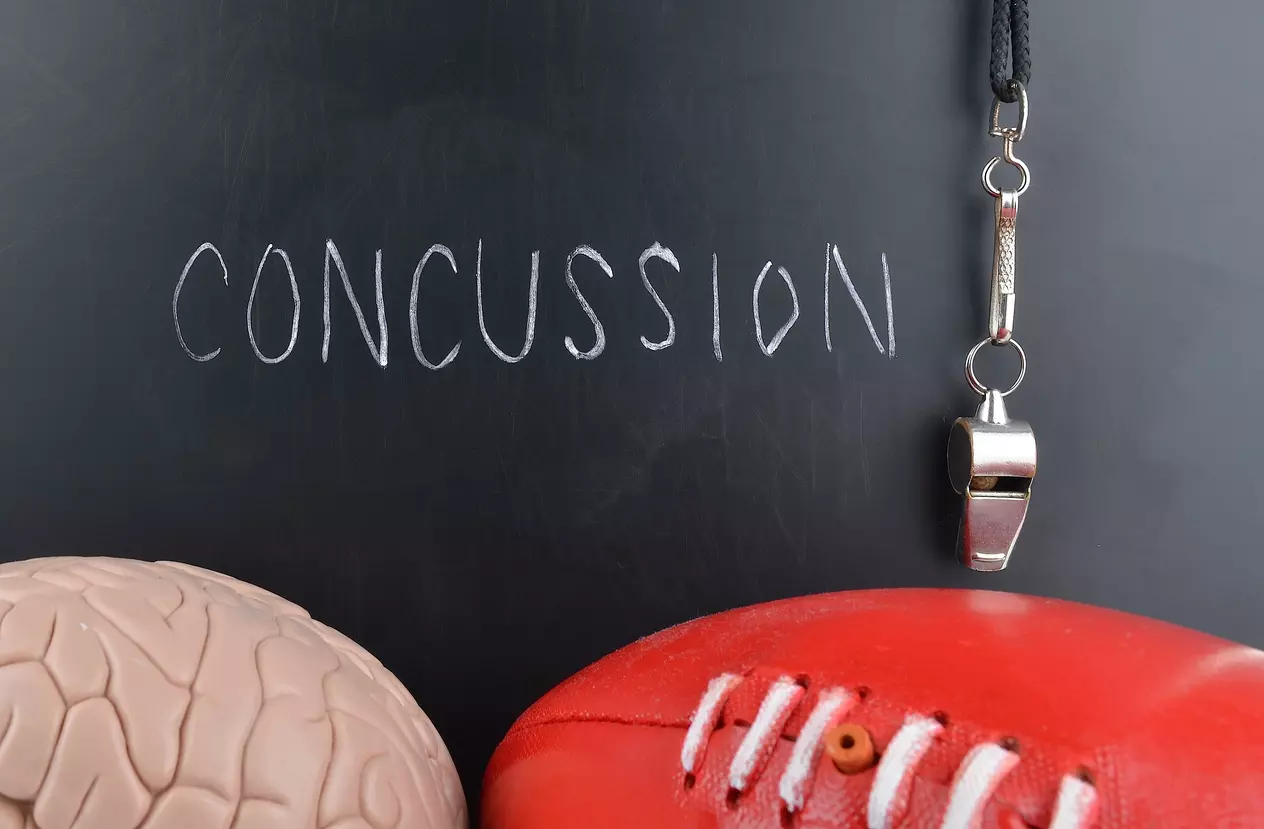
How physiotherapy can help with sports concussions
A step-by-step plan should be developed to safely return to sports, work or school after all symptoms have resolved, with regular follow-ups

In early July, India women's cricketer Richa Ghosh, who was part of the first T20 international between India and South Africa, suffered a concussion and had to leave the game.
Concussions in cricket are not uncommon. The death of Australian batter Phillip Hughes, who was struck by a bouncer on the side of his head resulting in a fatal cerebral hemorrhage in 2014, ultimately led to the International Cricket Council bringing in the "concussion substitute" rule in 2019.
Hughes' death has also prompted advances in helmet safety and discussions around how the game is played.
Closer to home, star batter Smriti Mandhana suffered a blow to her temple and ear during a warm-up match between India and South Africa ahead of the ICC ODI World Cup in February 2022.
The Ghosh and Mandhana incidents are among the few case studies published in the field in India, where there is a lack of comprehensive, sport-specific concussion data and guidelines available
In recent years, public awareness of the potential long-term effects of concussions and mild traumatic brain injuries sustained in sports has significantly increased.
Studies have demonstrated a clear link between blows to the head in sports and an elevated risk of symptoms from head injuries by 50 percent later in life.
Understanding concussions
Concussions can result from a blow to the head, face, neck or body, leading to a range of clinical symptoms that may include loss of consciousness. Typically, a concussion results in short-lived, spontaneously resolving neurological impairments, reflecting a functional rather than structural injury.
The US, UK and Ireland, where contact sports such as rugby, football, hurling and ice hockey flourish, have issued concussion guidelines. These include:
Immediate removal of any athlete suspected of having a concussion to minimise the risk of further injury.
Professional evaluation by a doctor experienced in concussion diagnosis and management.
No same-day return to the field. Research indicates the brain requires more time to recover, making it unsafe to resume activity within 15 minutes of the injury.
Medical clearance. Athletes should only resume physical activity once they are symptom-free and have received medical clearance from a doctor.
Diagnosing a concussion can be challenging. Underdiagnosis is common as athletes don't always have severe symptoms.
Symptoms can include mild signs such as headaches, dizziness and neck pain to more severe symptoms such as brain bleeds, seizures, fainting and loss of hearing or vision.
There have been great strides in utilising advanced imaging techniques to view the microstructural and functional impairments of the brain following traumatic brain injury.
Computed tomography (CT) and magnetic resonance imaging (MRI) are conventional imaging techniques that can be used to rule out moderate to severe traumatic brain injury, which may be characterised by bleeding within the skull, contusion, oedema and fracture.
How physical therapy helps
Physical therapy plays a crucial role in concussion care and management.
Physical therapists need to conduct a thorough assessment to understand the extent of the concussion and any related symptoms. This includes a detailed history and examination of balance, coordination and function status.
They should look for any red flags, signs and symptoms such as headache, mechanism of injury, any pain travelling to arms, dizziness, tinnitus, loss of hearing or vision and try to rule out all of them.
The Ten Movement Training Principles have been proposed as a usable and relevant concept to guide and support rehabilitation. When applied to concussion these principles provide a comprehensive overview of key strategies.
When treating post-concussion effects, physiotherapists should focus on symptom management, cognitive and visual rehabilitation, exercise and activity management, and patient education before returning to sports, work or school.
Exercises should be introduced gradually, tailored to the individual's symptoms. Aerobic exercises are particularly beneficial for improving brain function and reducing post-concussion symptoms.
For those experiencing dizziness or balance issues, balance and coordination, spatial awareness training is recommended, while manual therapy can help with muscular symptoms. However, therapists should avoid manipulation techniques, as these could worsen symptoms or cause additional injury.
If cognitive or visual impairments are suspected, therapists can prescribe activities that challenge the brain. Educating patients is also crucial, emphasising the importance of rest, a gradual return to activity and taking precautions during exercises or physical activities.
Heading into the future
A step-by-step plan should be developed to safely return to sports, work or school after all symptoms have resolved, with regular follow-ups to ensure symptoms don't reappear as activity levels increase.
Psychologists play a crucial role in providing emotional and psychological support, as concussions can significantly impact mental health.
The use of protective gear is strongly recommended and sports associations should implement stricter safety regulations to reduce the risks associated with these sports, making them safer for athletes.
The International Cricket Council has taken significant steps to manage and mitigate the risks associated with concussions in cricket. Their guidelines include comprehensive protocols for assessing and managing on-field concussions, ensuring any player who suffers a head injury receives proper medical attention and observation.
The introduction of stem guards in helmets is another crucial safety measure aimed at protecting players from neck and head injuries, especially from bouncers.
The Council's concussion substitute rule allows teams to replace a player who has suffered a concussion during a match. This ensures the injured player can be safely removed from play without disadvantaging the team while also prioritising the player's health and recovery.
These measures reflect commitment to player safety and adapting the sport to modern medical standards. It's time that other contact sports in India follow suit.
(Written by Dr Dheeraj Kumar (PT), Manav Rachna International Institute of Research and Studies, Faridabad. Originally published under Creative Commons by 360info.)

